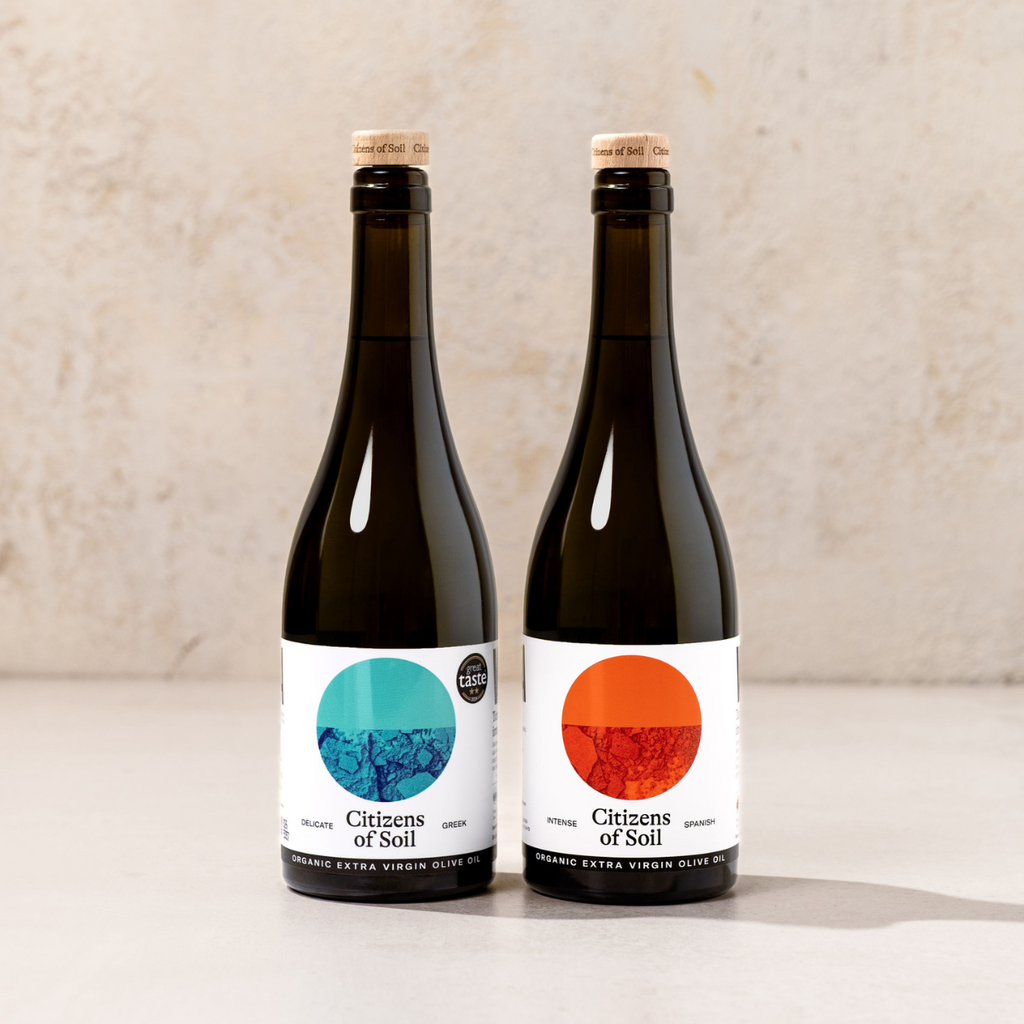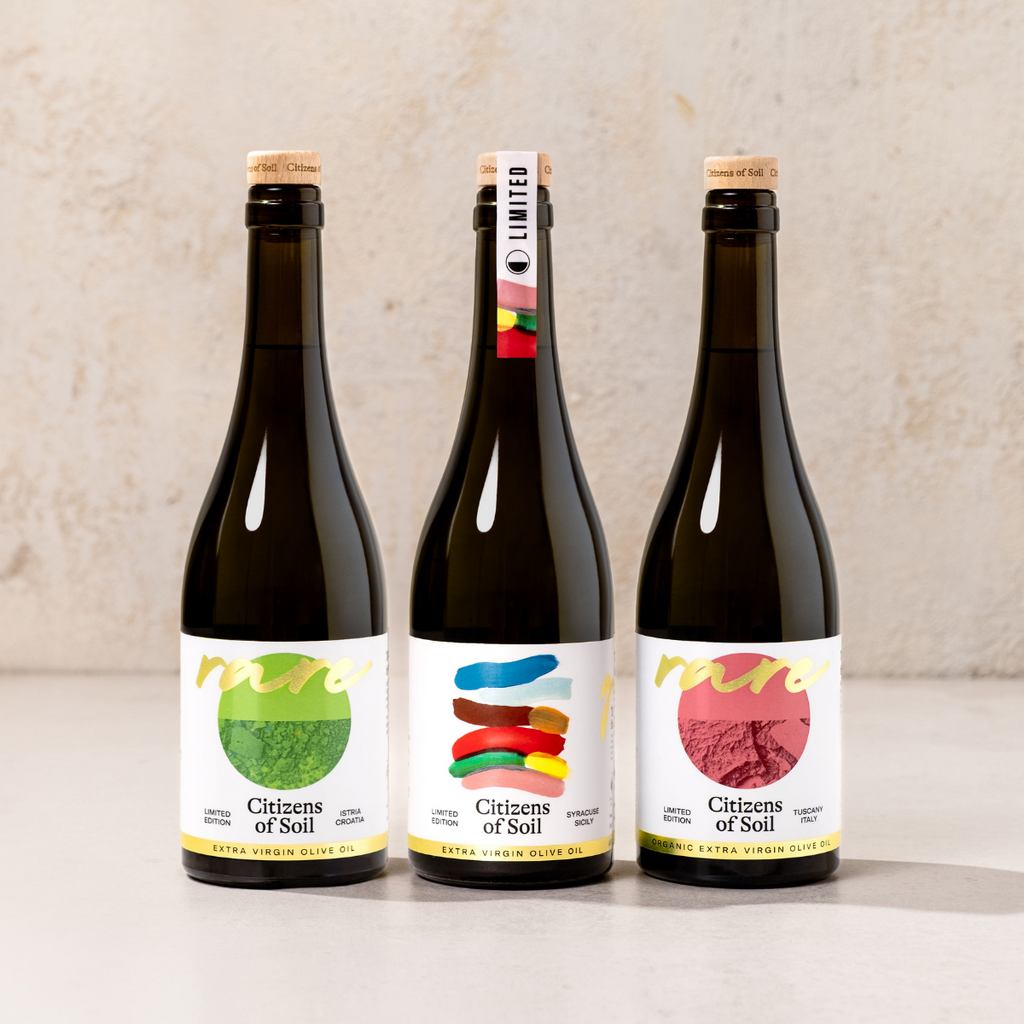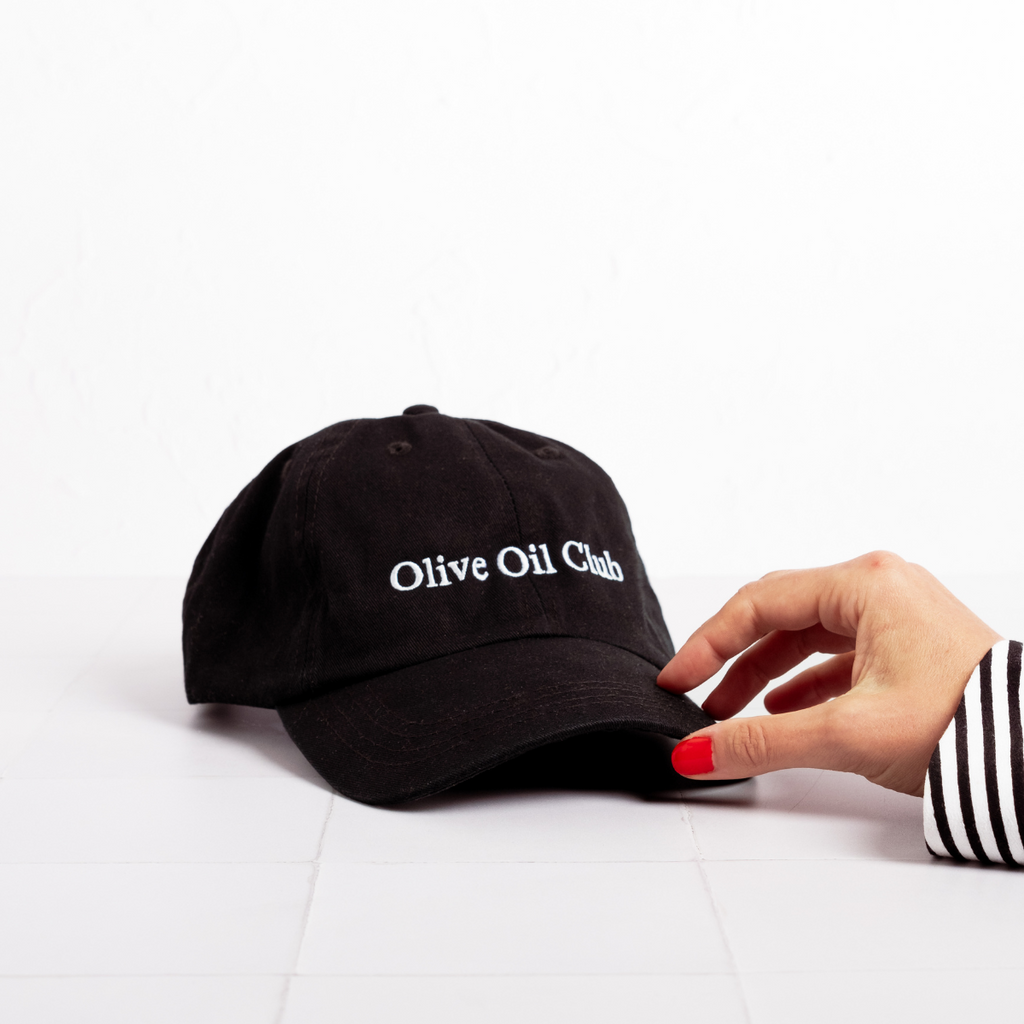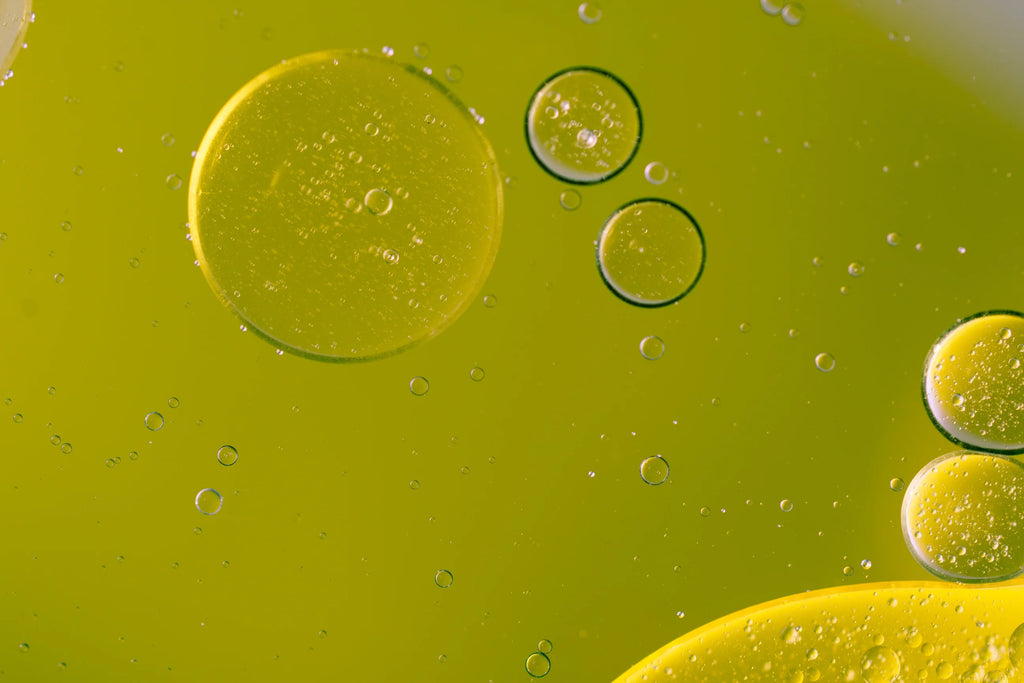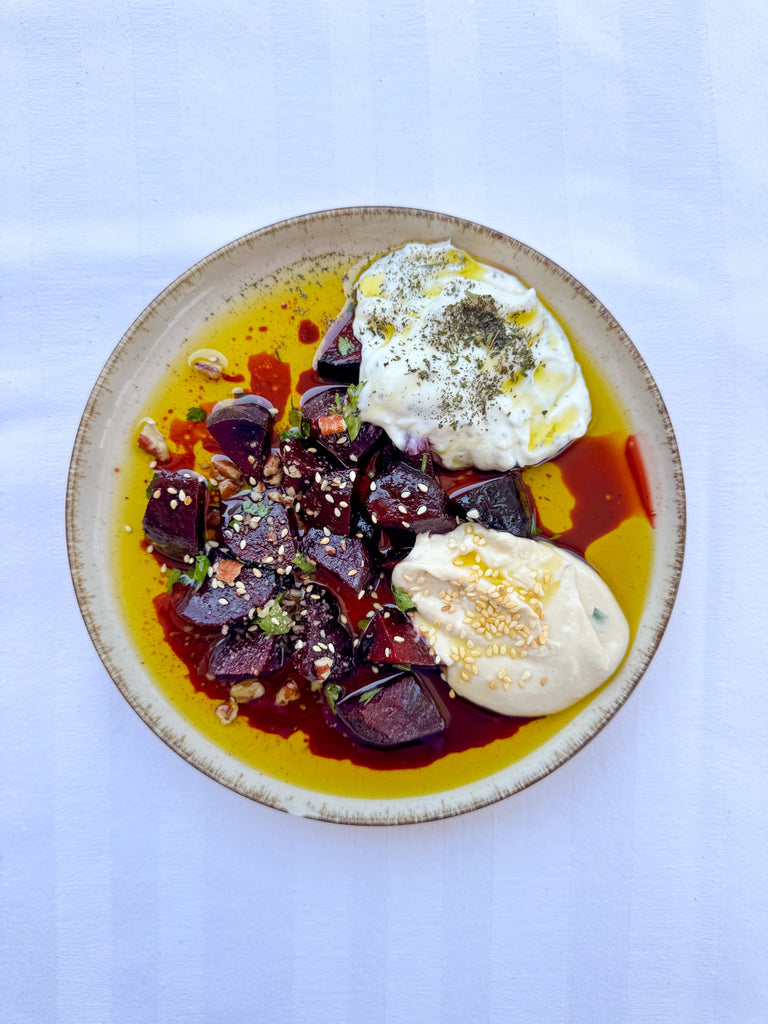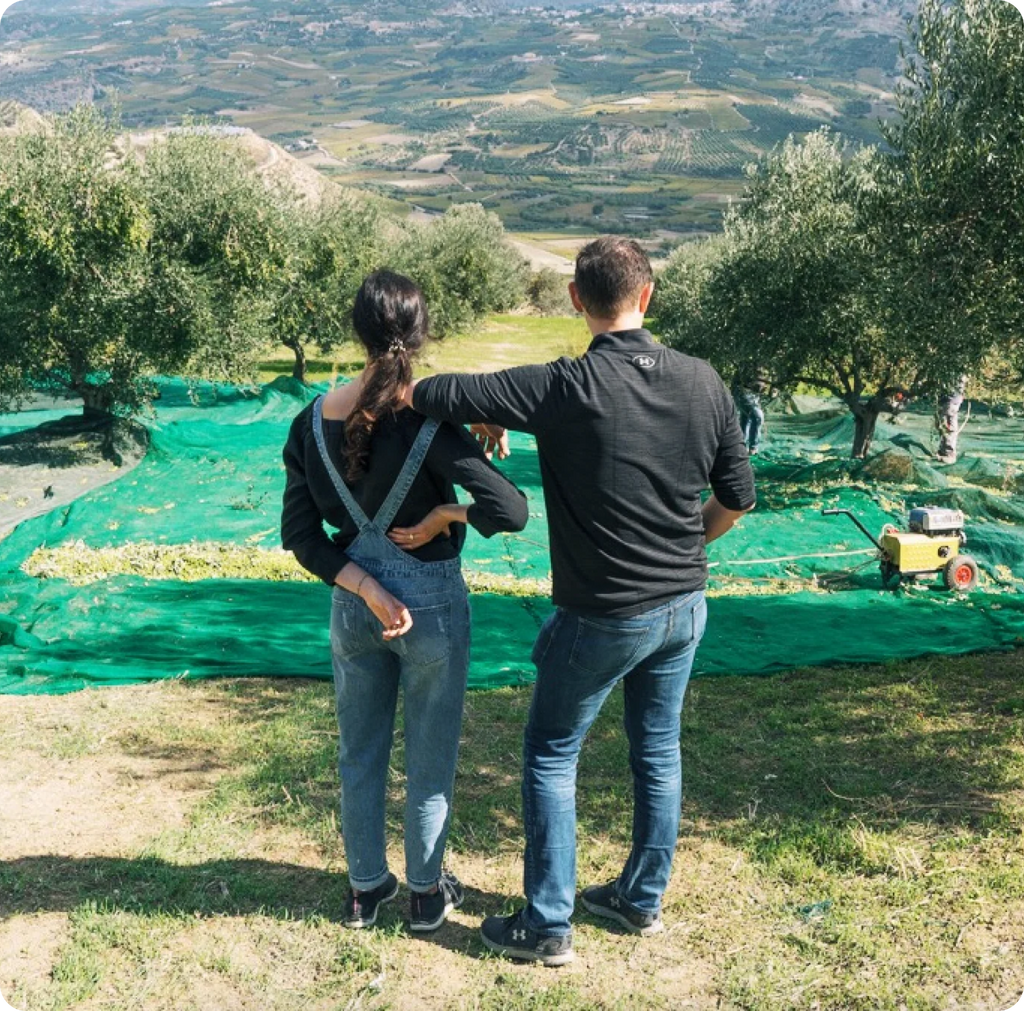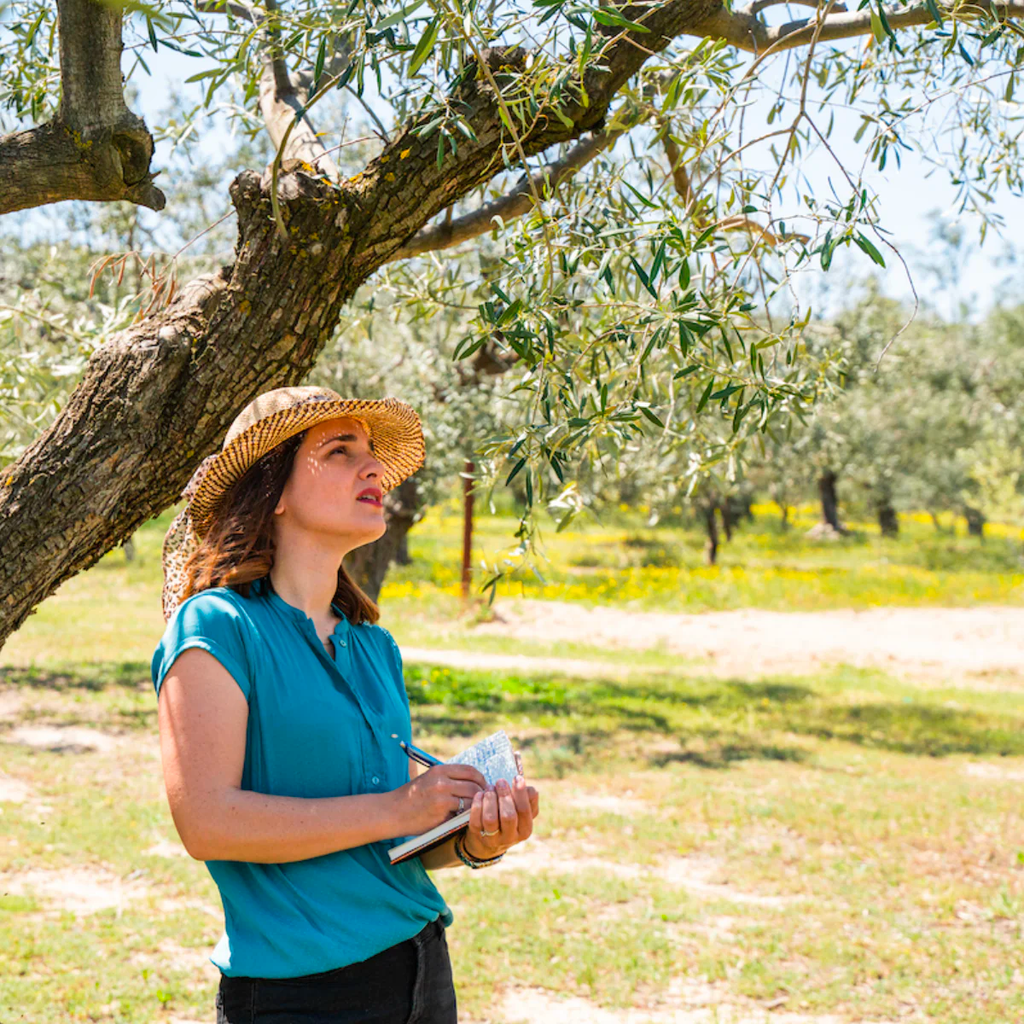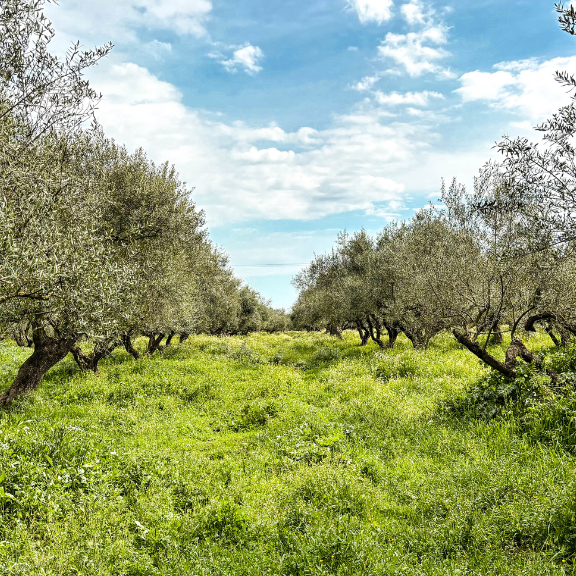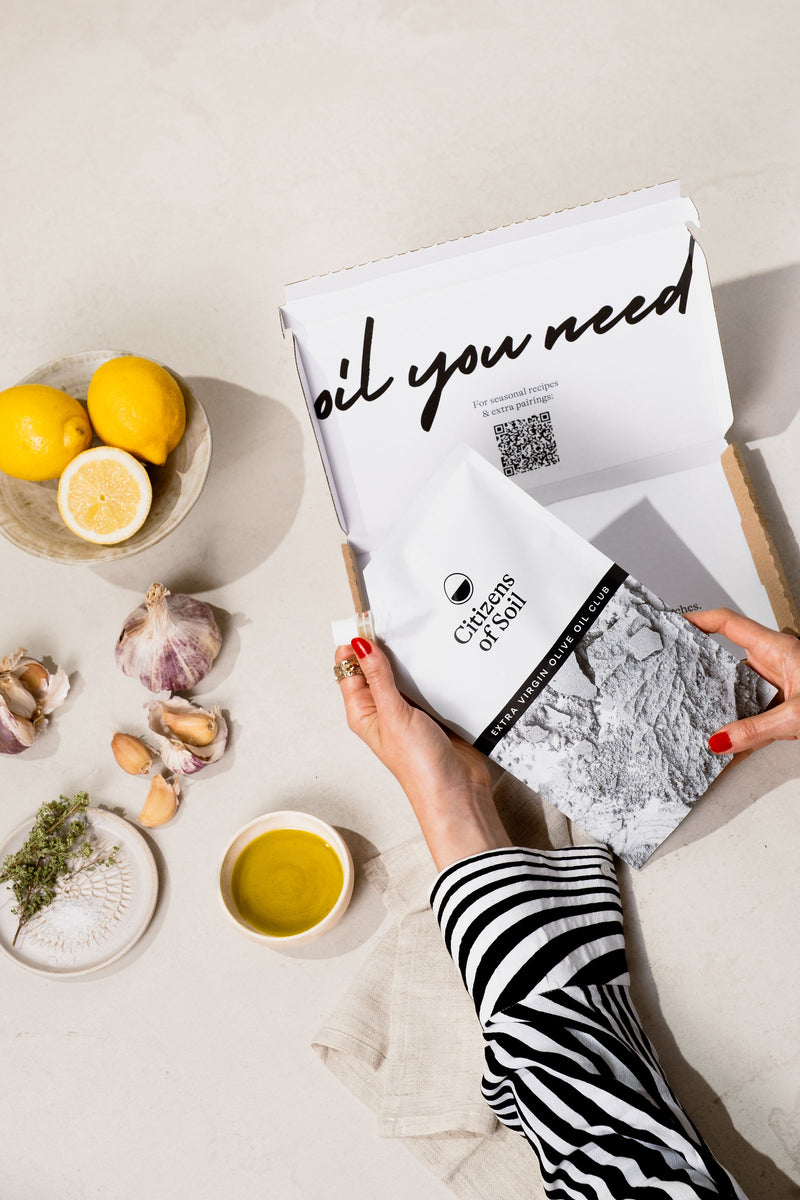Let's talk fat: oleic acid
Health: Omega 3 might get all of the headlines but let's not forget about omega 9, aka oleic acid?
This article was written by Alexis Kerner, a leading international olive oil expert & environmental scientist and edited by the Citizens of Soil team.
Polyphenols are having their moment. And whilst these small but mighty components make EVOO a superstar of antioxidant and anti-inflammatory value, we cannot forget what the majority of olive oil actually is—fat.

Before the phenol-hype, scientists were—and still are—studying the primary fat of olive oil, oleic acid (OA), also known as omega 9.
Healthy, unsaturated fats are an important dietary component that helps to build cell membranes and keep our nervous systems working properly. They also help the body absorb vitamins like K, A, D, and E. Some are essential fatty acids like omega 3 and 6 that our bodies cannot manufacture on their own. And, of course, all fats provide us with valuable energy.
All you need to do is go to the supermarket to see that there are many edible fats on the market.
Many are less expensive than olive oil and also tout their healthy, unsaturated fat content. But not all fat is created equal.
Seed oils like sunflower, corn, and soy are rich in poly-unsaturated fat, omega 6. Fish like salmon and mackerel are high in omega 3. Whereas, olive oil, which contains both omega 3 and 6, is highest in an omega 9 monounsaturated fatty acid called oleic acid. And olive oil can be comprised of up to 85% oleic acid.
Fats are not created equal, and neither is their consumption. The amount of each type of fat consumed is vital to the optimum function of our bodies.
Western countries are currently consuming high amounts of seed oils; they are more economical than olive oil and give a higher financial margin to your everyday biscuit company.
However, what is saved in cost is being paid for in heath as there is now the need to compensate for the lower levels of omega 3.
Ideally, health experts recommend that we ingest a ratio of omega 6 to omega 3 of around 4:1 contrary to the current 16:1 consumed in a average western diet. A failure to control this key ratio, can lead to weight gain and heart disease.
But, by substituting olive oil for seed oils and eating fish high in omega 3, we can reach this balance. Our bodies, more specifically our livers, process oleic acid differently which leads to its ability to reduce it being stored as excess body fat.
Instead of using the old diet model of purely "calories in, calories out", it is important to be looking at:
- The types of food we are consuming.
- How they are broken down.
- And how their assimilation into our bodies can be affected by the combination of other foods.
One outstanding example is the power of oleic acid in olive oil and its ability to lower blood glucose after a meal rich in simple carbohydrates. It does this by lowering the Glycaemic Index (GI) and increasing insulin sensitivity. As a result, using olive oil with foods with a high GI can help to head off the development of type 2 diabetes.
Cholesterol, a compound created in the liver, is necessary for heart health, a functioning nervous system and strong cell membranes. Cholesterol can be affected by the types of fats we consume, and polyunsaturated fats like omega 3 and omega 6 can help to reduce bad cholesterol (LDL). Olive oil not only helps to reduce LDL, but the monounsaturated fats found in olive oil can not have been found to increase the good kind of cholesterol (HDL).

Cooking: oleic acid takes the heat.
Supermarket seed oils often claim that they are high oleic acid, as high in monounsaturated fats have been shown to be most suitable for high heat frying. However these oils are usually modified in someway to boost this desired content. Olive oil, on the other hand, is naturally high in oleic acid and extra virgin olive oil has an extra-added benefit to resist oxidation with its phenolic, antioxidant content.
Farming matters.
So, we know olive oil is high in oleic acid, and now that oleic acid is good for our health and is good for cooking. However, extra virgin olive oils can have varying percents of this good stuff.
Mostly it will depend on the variety being used to make the oil. Some varieties, like Koroneiki and Picual, are just naturally higher in this fat. There are also environmental factors as well as farming techniques that can alter an olive oil’s composition.
Juan Olivares, an expert in his field and an award-winning olive oil producer in Spain (who, with his partner Carolina, make a batch for the Olive Oil Club), makes sure to implement specific farming methods to obtain the best and healthiest olive oil possible.
He explained its complexity by phone as he drove through his olive groves.
"There is more to just the variety", he said. "Temperatures and regions play a key role in fatty acid content."
He has managed to produce an Arbequina variety olive oil, usually lower in OA, with an excellent fatty acid profile and with a higher-than-average phenol content for a Arbequina oil. (👀 Arbequina oils usually come in at around 50% oleic acid, but Juan & Carolina's olive oil is at 71.97%—which is the OA of a Picual normally!).
Working with nature and understanding the factors of the natural systems we can achieve better outcomes.

How does oleic acid affect the taste of olive oil?
Oleic acid does not have a taste per se, but it does have an affect on the mouth feel of the oil.
Olive oils high in oleic acid are often remarkably more viscous or feel thicker than oils that contain lower percents. Think of the difference in sunflower oil and extra virgin olive oil as you pour it: one is thin and the other thicker.
This difference is the healthy oleic acid content that hugs your heart, lowers your cholesterol, reduces your blood sugar, and keeps your cells strong.
For further reading on this topic.
The Olive Oil Diet by Dr Simon Poole and Judy Ridgway.
El Jugo de Aceituna que cuida tu salud by José J Gaforio.
Aceites de Oliva y Salud edited by Eduard Escrich.
Effects of Cultivar, Maturity Index and Growing Region on Fatty Acid Composition of Olive Oils.
Fatty acid profiles of varietal virgin olive oils.
Author — Alexis Kerner
Alexis is an environmental scientist and olive oil expert who has lived in Seville, Spain for over two decades. She holds a degree in environmental studies from Connecticut College and her title as Expert Olive Oil Taster from the University of Jaén and the International Olive Council. Since 2014 she is the owner of The Olive Oil Workshop, through which she offers educational tastings in Seville as well as consultation to producers and buyers. She I also served as judge in numerous international olive oil competitions.
Find her at: Theoliveoilworkshop.com

